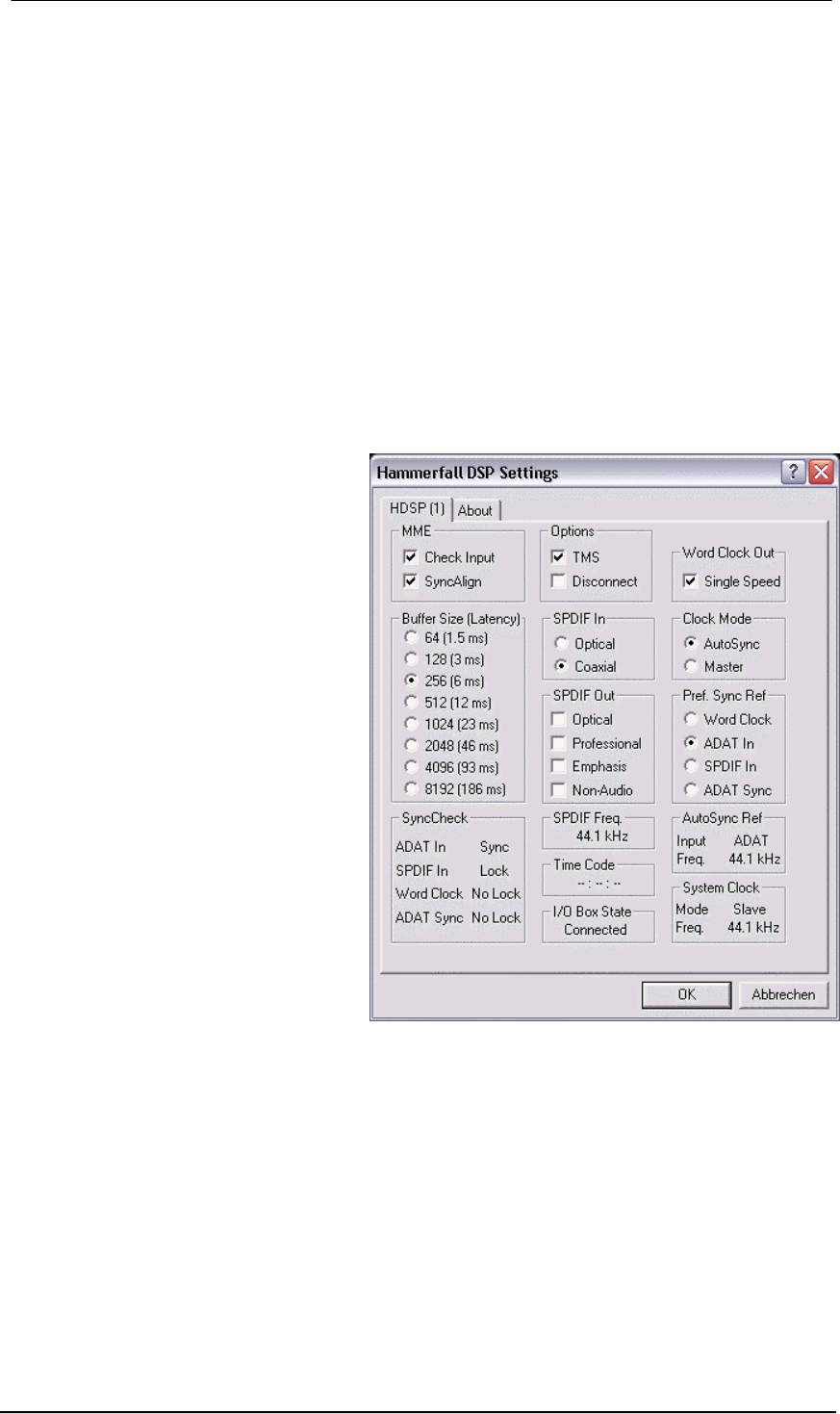
User's Guide HDSP System Multiface II © RME
21
The Hammerfall DSP's ADAT optical input and the SPDIF input operate simultaneously. Be-
cause there is no input selector however, the HDSP has to be told which of the signals is the
sync reference (a digital device can only be clocked from a single source). This is why the sys-
tem has been equipped with automatic clock source selection, which adopts the first available
input with a valid digital signal as the clock reference input. The input currently used as sync
reference is shown in the AutoSync Ref status field, together with its sample frequency.
Via Pref. Sync Ref (preferred synchronization reference) a preferred input can be defined. As
long as the card sees a valid signal there, this input will be designated as the sync source, oth-
erwise the other inputs will be scanned in turn. If none of the inputs are receiving a valid signal,
the card automatically switches clock mode to ‘Master’.
To cope with some situations which may arise in studio practice, setting ‘Pref Sync Ref’ is es-
sential. One example: An ADAT recorder is connected to the ADAT1 input (ADAT1 immediately
becomes the sync source) and a CD player is connected to the SPDIF input. Try recording a
few samples from the CD and you will be disappointed. Few CD players can be synchronized.
The samples will inevitably be corrupted, because the signal from the CD player is read with the
(wrong) clock from the ADAT i.e. out of sync. In this case, 'Pref Sync Ref' should be temporarily
set to SPDIF.
If several digital devices are to be used
simultaneously in a system, they not
only have to operate with the same
sample frequency but also be synchro-
nous with each other. This is why digi-
tal systems always need a single de-
vice defined as ‘master’, which sends
the same clock signal to all the other
(‘slave’) devices. RME’s exclusive
SyncCheck technology (first imple-
mented in the Hammerfall) enables an
easy to use check and display of the
current clock status. The ‘SyncCheck’
field indicates whether no signal (‘No
Lock’), a valid signal (‘Lock’) or a valid
and synchronous signal (‘Sync’) is
present at each of the digital clock
source inputs. The ‘AutoSync Ref’
display shows the current sync source
and the measured frequency.
In practice, SyncCheck provides the
user with an easy way of checking
whether all digital devices connected to
the system are properly configured.
With SyncCheck, finally anyone can
master this common source of error, previously one of the most complex issues in the digital
studio world.
Thanks to its AutoSync technique and lightning fast PLLs, the HDSP is not only capable of han-
dling standard frequencies, but also any sample rate between 28 and 103 kHz. Even the word
clock input, which most users will use in varispeed operation, allows any frequency between 28
kHz and 105 kHz.
At 88.2 or 96 kHz: If one of the ADAT inputs has been selected in ‘Pref Sync Ref’, the sample
frequency shown in the ‘SPDIF In’ field differs from the one shown in ‘AutoSync Ref’. The card
automatically switches to its Sample Split mode here, because ADAT optical inputs and outputs
are only specified up to 48 kHz. Data from/to a single input/output is spread over two channels,
the internal frequency stays at 44.1 or 48 kHz. In such cases, the ADAT sample frequency is
only half the SPDIF frequency.


















